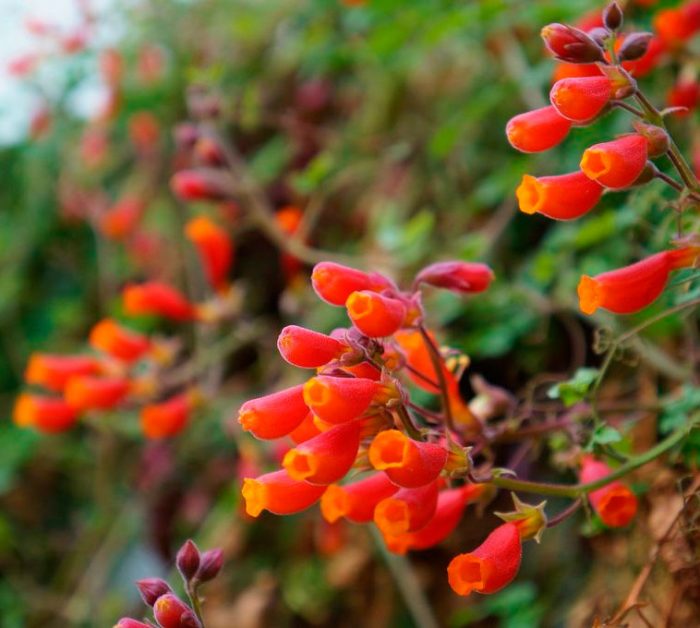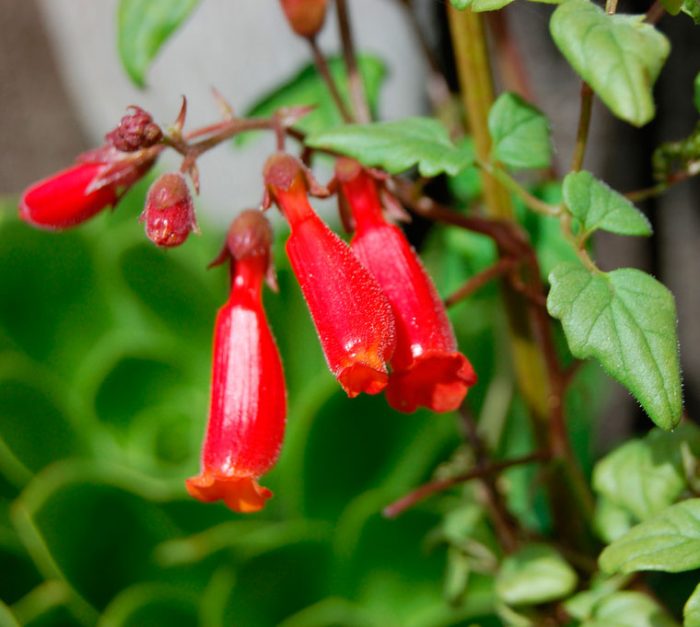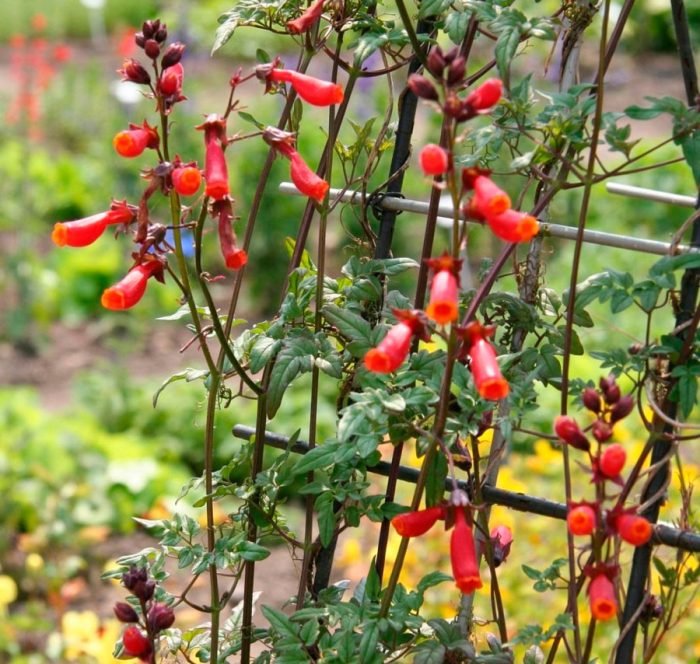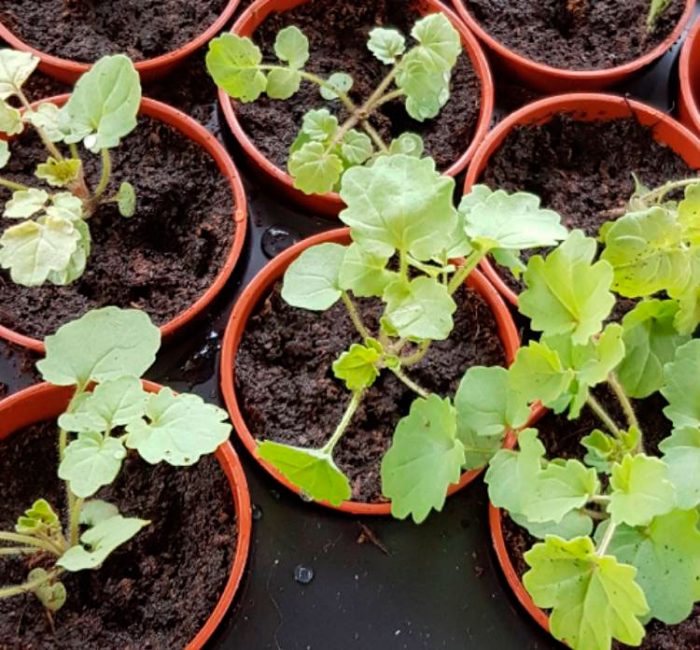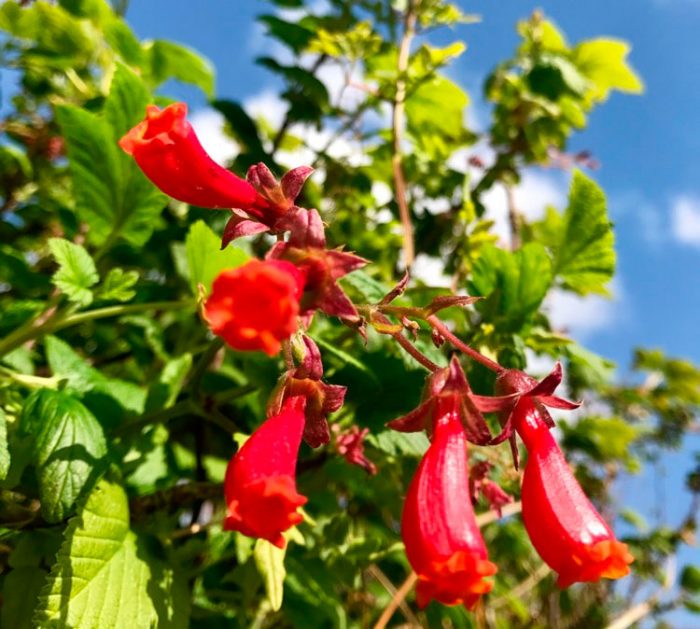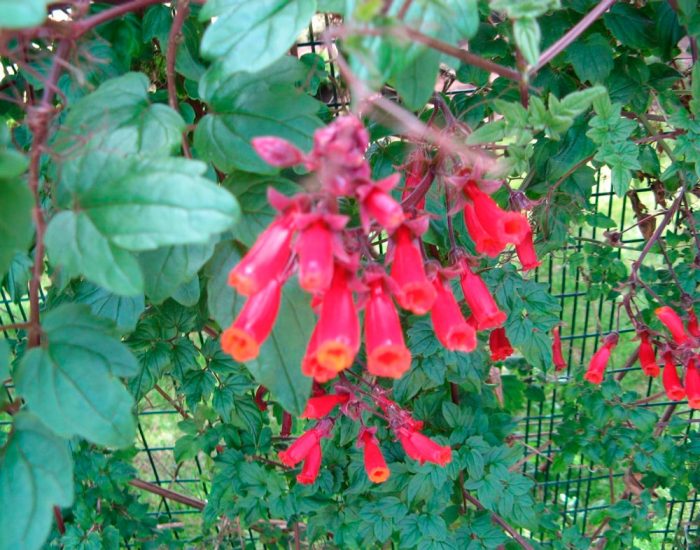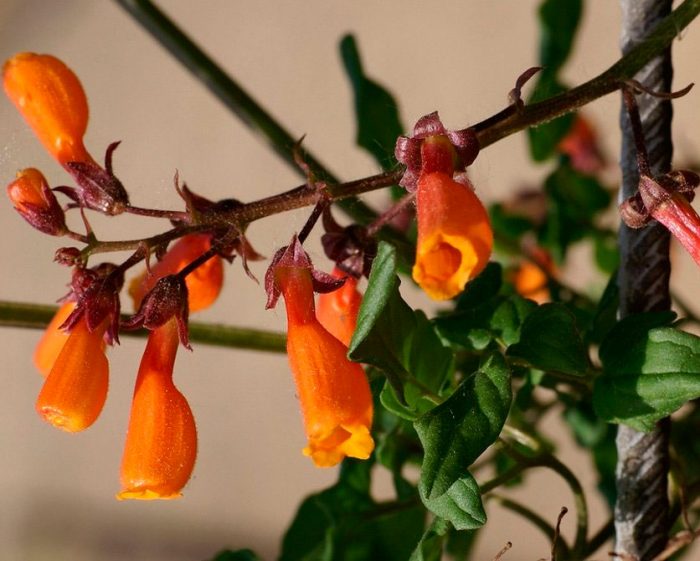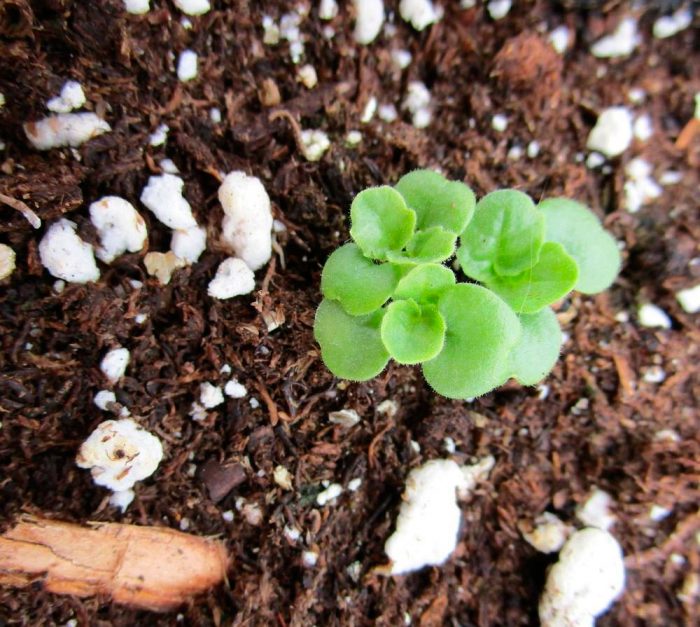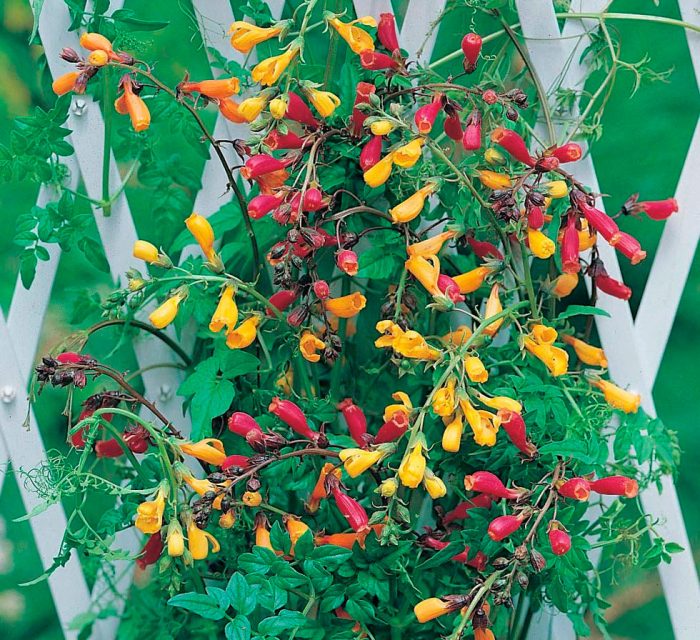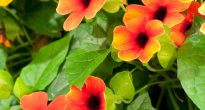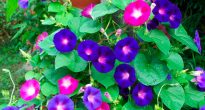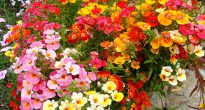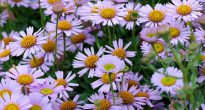Among the most spectacular garden vines is the droppings. Although this plant is distinguished by its unpretentious care, it is still considered a "capricious culture". This is due to the fact that the plant has a low resistance to frost. As a perennial, it is possible to cultivate a droplet only as a container plant, and you can also dig a bush in the fall, plant it in a container and bring it into the room.
This luxurious graceful vine is able to decorate any garden area. Its spectacular flowers of a fiery color look very unusual and at the same time elegant.
Content
Features of the fruit tree
To date, many different vines are cultivated in garden plots, most of which are quite rare. They are very popular with gardeners for their versatility and fast growth, thanks to which they are able to cover large areas in just a few weeks.
Among the huge number of different lianas, you can meet real exotic plants. Among them is the crochet, which is scientifically called ekremocarpus. Such a perennial is found in nature in Chile. In various countries, it is cultivated exclusively as an annual. This lush blooming vine with spectacular foliage looks very elegant and unusual.
Eccremocarpus, or eccremocarps (Eccremocarpus) are perennial herbaceous plants, the stem length of which can reach 200-300 cm. This genus combines four different species, while only one of them is cultivated by gardeners, namely: Scaber (Eccremocarpus scaber).
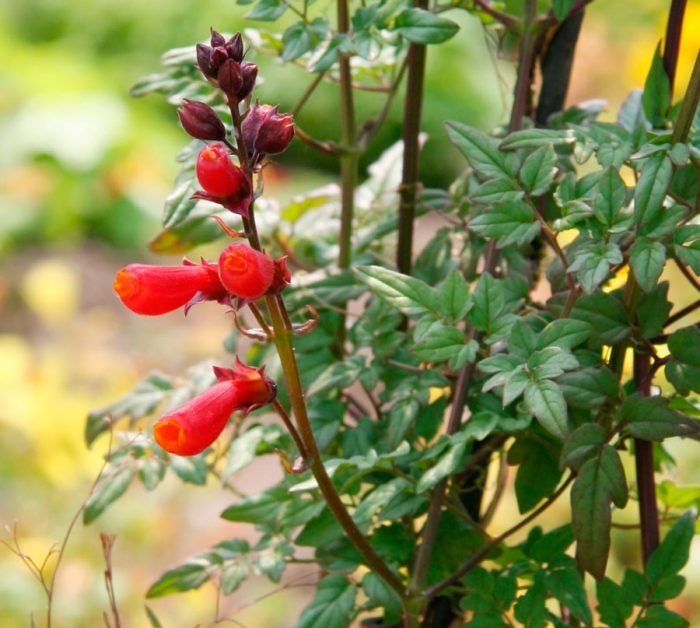
This type is distinguished by its elegance. Its thin delicate almost straight stems look very impressive, twisting around the support. A lot of small tendrils grow on the lash, with the help of them she can climb a support that absolutely anyone can. At the same time, the shoots of the vine can decorate both the fence and the walls of any building.
Despite the fact that this vine is grown in culture as an annual, its lashes by the end of the season can reach a length of about 5 m. Outwardly, the plant looks very delicate and airy. However, in fact, it creates reliable protection from the wind, as well as a fairly dense coating that can hide from prying eyes.
The composition of opposite complex-pinnate leaf blades includes 3–7 small shares. As a result, the crown looks lacy and weightless. The leaves are painted in a dark rich green shade. At the same time, the liana's foliage is very lush, so it is almost impossible to consider individual leaf plates. They entwine the support with a dense green carpet. From the median vein of each leaf plate, small antennae grow, which are located at the edge. The bush grows from tubers.
In addition to the spectacular and not quite ordinary foliage, this liana stands out with very beautiful flowers, of which a huge amount is formed. During flowering, loose racemose inflorescences are formed at the tops of the branches, which include small tubular flowers. They have a fiery color. The flowers are opposite to the leaves, which is why they stand out clearly against their background. Their pharynx is almost closed, and the tube is narrow. From a distance, it may seem that the flowers are a splash of bright paint on a green background. When the plant fades, pale green fruits are formed in place of the flowers, shaped more like small peppers or spears. They begin to ripen in August. Remember that fruits that form at the place of inflorescences negatively affect the splendor of flowering.
The inflorescences of this plant can be painted only in fiery colors, namely: bright orange and deep red, or rather in their various combinations. Flowers often have a variegated color: orange and red. The droplet bloom in July, and only fades with the arrival of frost. In total, its flowering lasts at least 2.5 months.
Growing a vine
Where the droplet comes from, the plant grows back every year, since its large rhizome does not die in winter. However, in the middle latitudes, its tubers are not able to survive even a mild winter, since they die already when the temperature drops to 0 degrees. However, in the southern regions, where winters are warm and there are no frosts, the vine can be grown in open ground as a perennial. In middle latitudes, the flower is also grown as a perennial plant, but in this case it has to be dug up in the fall, planted in a pot and transferred to a room where the temperature in winter does not drop to negative values.
As a rule, most gardeners will plant a crop in a large container. In this case, it is much easier to control the level of nutritional value and moisture content of the soil mixture, which makes it easier to care for the plant. However, if desired, it is quite possible to plant it in open ground.
You can grow ekremocarpus:
- As an annual... In this case, the vine is grown through seedlings. The grown bushes are transplanted into the garden or into large containers.
- Like a biennial plant... Seeds are sown in the last days of August or the first in September in a cold greenhouse. For the winter, the bushes should be moved to a room in which the air temperature does not drop below 1 degree. With the onset of spring, they are transferred to open ground.
- As a perennial... In this case, the vine is transferred to a room in the fall, where it will stay until spring.
Planting a droplet
Seat selection
For growing a droplet, you should choose a place that will be reliably protected from precipitation. The fact is that such a vine reacts extremely negatively to moisture on its foliage and flowers. It is especially necessary to protect it from precipitation during flowering. This is why gardeners prefer to grow it in a container that can be placed almost anywhere. If you decide to plant a bush in the soil, then find the most secluded and necessarily protected place for the plant.
Also, when choosing a suitable place, pay attention to the fact that this is a photophilous plant. That is why you should choose southern slopes or walls for placing lianas, in general, this should be the sunniest and warmest place.
Particular attention should be paid to the choice of soil. It should be moist and loose. Sandy loam, loamy or clayey-sandy soil is excellent for planting a cropper. It should also be taken into account that the soil must be saturated with nutrients. That is why, before planting a bush, organic and mineral fertilizers are introduced into it. If you use a container for planting it, then it should be filled with a universal loose soil mixture.
Landing
Seedlings are planted in a garden or in large containers in spring, but only after the air and soil have warmed up well, and return frosts are left behind. As a rule, this time falls in May. Since the rhizome, which is tubers, is small in size, during the planting of seedlings, a distance of 0.3 m is observed between them.
Bushes are planted in pre-prepared holes, while it is recommended to use the transshipment method. A thick drainage layer is recommended at the bottom of the container. After the seedlings are planted, they are well watered, and the surface of the substrate is covered with a layer of mulch.
Care for the droppings
Watering
When growing a cropped crop, special attention should be paid to its watering. It does not matter where it grows, outdoors or in a container, you need to ensure that the ground is always slightly damp. It is not necessary to water the bushes regularly, but you cannot allow the earthen coma to completely dry out. Liana growing in a container should be watered systematically. And on hot summer days, the soil mixture in a container is moistened systematically 1-2 times a day.
Fertilizer
Since the vine is fast growing, it needs a lot of nutrients. If it grows in a container, then it is fed once a week. Any mineral fertilizer is suitable for this, for example, a mineral complex for flowering crops. They begin to feed the flower after moving the container to the street, and finish in August.
Vines cultivated in the open field are fed 2 or 3 times during the growing season, namely: 30 days after planting in the soil, during the period of bud formation and during the opening of flowers. Some gardeners feed a droplet growing in the ground once every 15 days. Fertilizers are used the same as for feeding this vine in a container.
To prevent moisture from quickly evaporating from the soil, as well as to reduce the amount of weeding and loosening, mulch is often used. At the same time, it is recommended to mulch the liana both in the open field and in a container. Decorative mulch is perfect for this, as well as various materials of plant origin.
Garter
A lot of small tendrils are formed on the lashes, providing reliable grip with the support. However, as the stems grow, they should be guided, if necessary, and additionally tied up. This will create a tight coverage with no gaps.
Pruning
For long-term spectacular flowering, it is necessary to systematically break off the inflorescences that have begun to fade. And also be sure to remove all formed fruits.
To accelerate the growth and development of the vine, as well as for more abundant flowering, before taking it out to the garden plot, all overly elongated stems must be shortened.
Wintering
In the middle lane in the open field, the droppings will not be able to survive in winter, no matter how you cover it. The only option is to plant the bush in a container and bring it into the house in the fall. When removing the plant from the soil, remember that you must definitely try to keep the earthen ball intact. Before bringing the liana into the room, it is necessary to shorten the stems.
For the wintering of such a plant, a room that does not freeze is suitable. The air temperature in it should be about 5-10 degrees (not higher than 15 degrees). In this case, the room must be well lit.
Diseases and pests
The fruited plant is highly resistant to fungal diseases.Moreover, pests rarely settle on it. But still, aphids can settle on this spectacular vine, but only if there is a plant affected by it nearby. You can get rid of such a sucking pest only with the help of insecticidal preparations.
Reproduction methods
Growing from seeds
Hipcarp can be grown from seeds in two ways: through seedlings and sowing them directly into the ground. Sowing is carried out in May after the soil warms up well. However, seeds are rarely sown in open ground in mid-latitudes. As a rule, liana is grown in seedlings. At the end of winter or early spring, the seedling box or container is filled with loose fertile soil mixture, which is moistened. Before sowing, small seeds are recommended to be mixed with a small amount of soil or sand. They are distributed over the surface of the substrate and sprinkled on top with a thin layer of soil mixture. Water the crops from a sprayer, and cover them with foil (glass) on top.
The first seedlings will appear in about half a month, but do not forget to arrange ventilation for the crops every day. During the formation of the third true leaf plate, the bushes dive into separate cups or into peat pots. It is recommended to immediately install a support for young vines.
The hardening of seedlings begins from the first days of May. And planting them in open ground or in a container should be carried out only when the return frosts are left behind.
If the autumn turns out to be warm, then the fruits of the droppings will have time to ripen even in the open field. If they are not ripe, then they are cut and hung in a well-ventilated and bright room. After a little over four weeks, the seeds are ripe and can be used for sowing.
Cuttings
If the vine is cultivated as a biennial or perennial, then it can be propagated by root cuttings. Moreover, their separation is carried out in the first autumn days. For rooting, they are planted in a loose soil mixture, and covered with a transparent cap on top. When they take root, they are transferred to a cool room (12-15 degrees) until spring.
Types of droppings
As mentioned above, in middle latitudes, only one species is cultivated - the crochet, or the rough eccremocarpus (Eccremocarpus scaber). However, thanks to breeding work, many decorative garden forms of this plant were born. They bloom more magnificently, and their inflorescences can also be painted in different shades.
The best garden forms:
- Tresco Scarlet... Spectacular flowers are painted in a rich red-orange hue. Moreover, the base of the tube is red, and the pharynx is yellow.
- Tresco Gold... Very lush inflorescences consist of shiny golden flowers.
- Tresco rose... Highly decorative flowers have a variegated color. The flowers themselves are cherry pink, and their throat is deep orange.
- Tresco... It is a mixture of varieties of different colors.
- Pink trumpets... Unusual salmon flowers have a golden edge.
- Aureus... Such a vine is decorated with gorgeous golden inflorescences.
Hedgehog in landscape design
An unusual spectacular liana, a droop tree, is often used to decorate a variety of supports, to form bright screens, to create protection for a resting place, and also for vertical draping and masking unsightly buildings. Such a plant looks simply amazing both on trellises, a fence, arches and a gazebo, and on the walls of a house, a terrace, various buildings and sheds. It is also often used to create a bright openwork background.
This exotic liana feels great and develops rapidly in any place where it is planted: on the balcony, in the garden, and on the terrace. But it is important to choose a well-lit and warm place for the flower. Typically, the cropped crop is cultivated as an annual plant. But it is quite possible to grow it as a perennial crop in a pot, removing it in a warm room for the winter.Moreover, it is often used in the preparation of decorative compositions.

